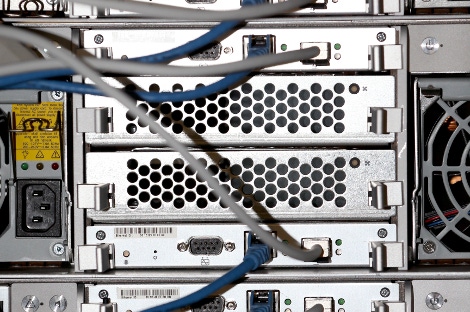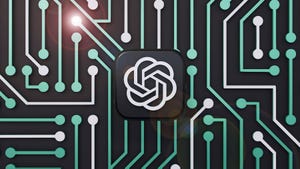Data Centers in 2016: Vendor Predictions
Here’s a compilation of some of the most interesting predictions we received from vendors this year
December 22, 2015

Every year starting around mid-November we get flooded with emails from vendors in the data center market (and outside of it) with their predictions for the following year. Some are interesting, some aren’t, and most are of course self-serving.
We’ve recently gone through all of the predictions vendors sent us so far this year, and tried to distill the ones we think are the most interesting and meaningful for the data center industry.
Here they are, the top data center predictions for 2016 from vendors in the space:
Data Center Networking
Doug Murray, CEO, Big Switch Networks
The top five hyperscale players (Google, Facebook, Microsoft, Amazon, Alibaba) will exceed 20 percent of total world-wide infrastructure spend, further exacerbating the “lead (read: actually be the top five), follow (read: do what the top five does), or get out of the way (read: outsource to cloud)” environment that's upsetting traditional IT provider businesses.
Open Source in the Data Center
John Engates, CTO, Rackspace
What many companies don’t want is vendor lock-in. Choosing the wrong technology or provider ranks up there with security as one of the biggest worries keeping CIOs up at night. And that’s why I predict open source will continue to play a critical role in cloud growth. Last year I described OpenStack, at age 5, as boring, and explained why that was good. Boring means stable and that stable foundation will allow enterprise in 2016 to more fully embrace open source cloud solutions and making them part of their companies’ overall cloud strategies.
Flash Storage for Big Data
John Schroeder, CEO and co-founder, MapR
Storage (Particularly Flash) Becomes an extremely abundant resource; next-generation, software-based storage technology is enabling multi-temperature (fast and dense) solutions. Flash memory is a key technology that will enable new design for products in the consumer, computer, and enterprise markets. Consumer demand for flash will continue to drive down its cost, and flash deployments in Big Data will begin to deploy. The optimal solution will combine flash and disk to support both fast and dense configurations. In 2016, this new generation of software-based storage that enables multi-temperature solutions will proliferate so organizations will not have to choose between fast and dense; they will be able to get both.
Applications First, Infrastructure Second
Docker
The ability to develop apps that can be deployed anywhere using containerization lessens the demands, and therefore the focus, on the data center and software-defined-data center architectures. Dev, Ops and IT as a whole will be allowed to think more in terms of what benefits end users most, unconstrained by the costly and time-consuming infrastructure management, expansion and enablement technologies that have confined them to date.
IoT and Data Center Interconnection
Tony Bishop, VP, Global Enterprise Vertical Strategy and Marketing, Equinix
Record-breaking adoption and expansion of IoT devices and sensors will continue to accelerate, resulting in a flood of data that severely strains network capacity and security. We predict that in 2016, enterprises will work to more seamlessly combine networked intelligence with the data being processed by sensors and actuators. This will enable the enterprise to gain more control of its information and enhance its ability to use the IoT to quickly adapt to changing conditions, create new value and drive new growth. Enterprises can improve their agility in rapidly changing IoT environments by deploying infrastructure that enables direct and secure connections between the multiple components that must be in synch to exploit the real-time insights the IoT offers. That kind of interconnection ensures employees, partners and customers can get the information they need, in the right context, using the devices, channels and services they prefer. Businesses will realize this, meaning robust interconnection will become a more prominent solution in this space in 2016, as an intersection point between IoT, clouds and the enterprise becomes increasingly necessary.
Data at the Jagged Edge
Scott Gnau, CTO, Hortonworks
Businesses must look beyond the edge of their data centers all the way out to the jagged edge of data. Data flows now originate outside the data center from many devices, sensors and servers on, for example, an oil rig in the ocean or a satellite in space. There is a huge opportunity to manage the security perimeter as well as to provide complete data provenance across the ecosystem. “Internet of Anything” creates a new paradigm that requires new thinking and new data management systems, and these solutions will mature and permeate the enterprise next year.
From Centralized to Distributed
John Hawkins, VP, marketing and communications, vXchnge
Location. Location. Location. Producers are leveraging a federated model when it comes to data centers. Many are relying on a higher number of strategically located data centers rather than utilizing the hub. For example, rather than storing massive amounts of data in a few select data centers, application providers are moving their applications to “the edge,” (in locations where they can serve customers locally, and reach more businesses and more consumers in more markets) in order to be closer to the consumer to reduce latencies and perform at higher rates.
About the Author
You May Also Like


.jpg?width=300&auto=webp&quality=80&disable=upscale)




